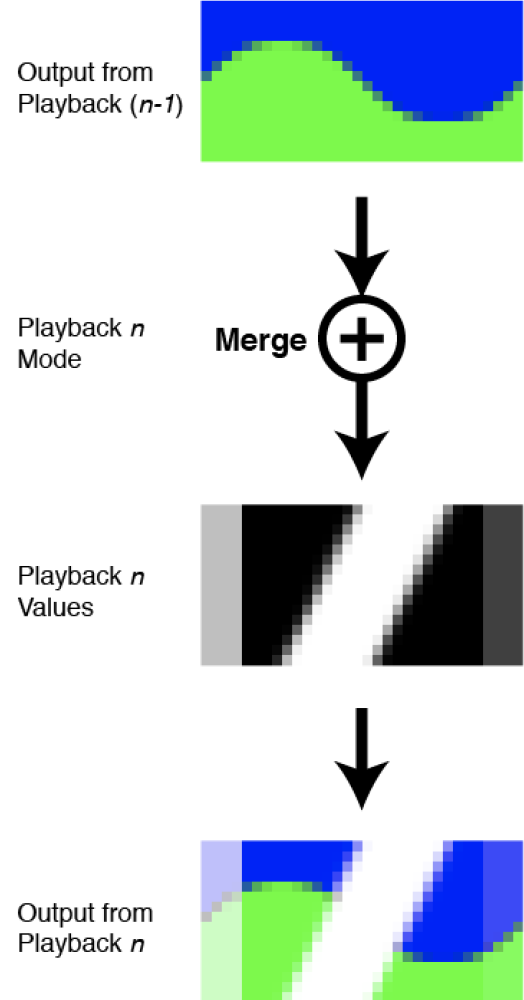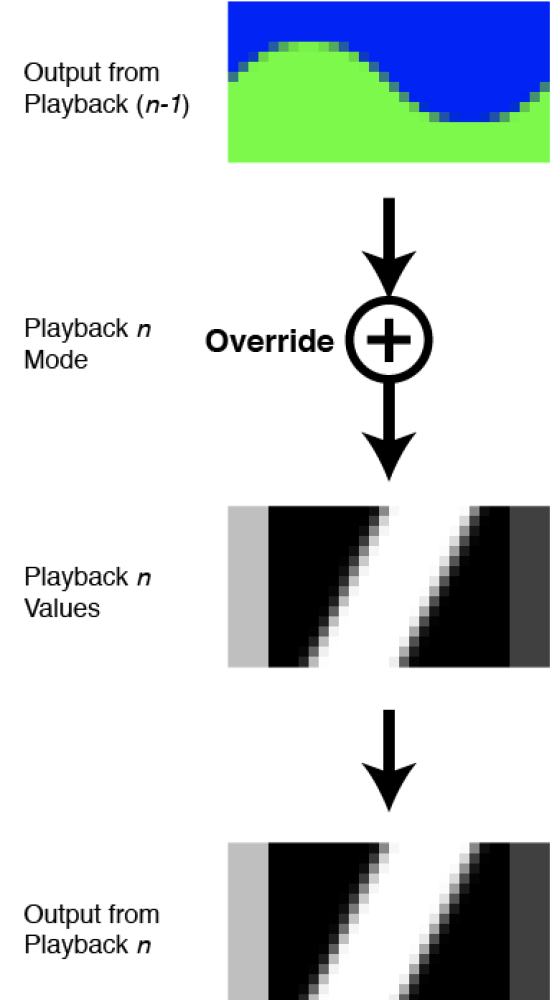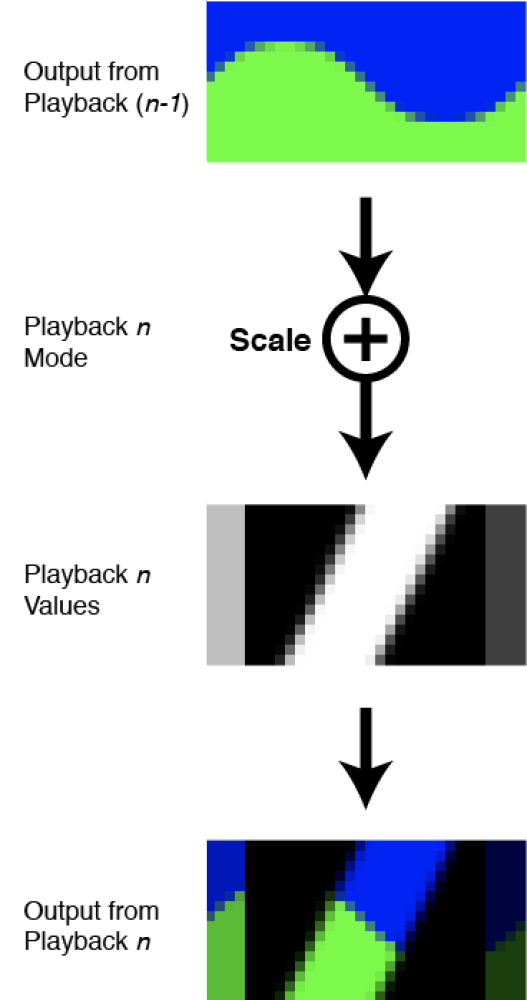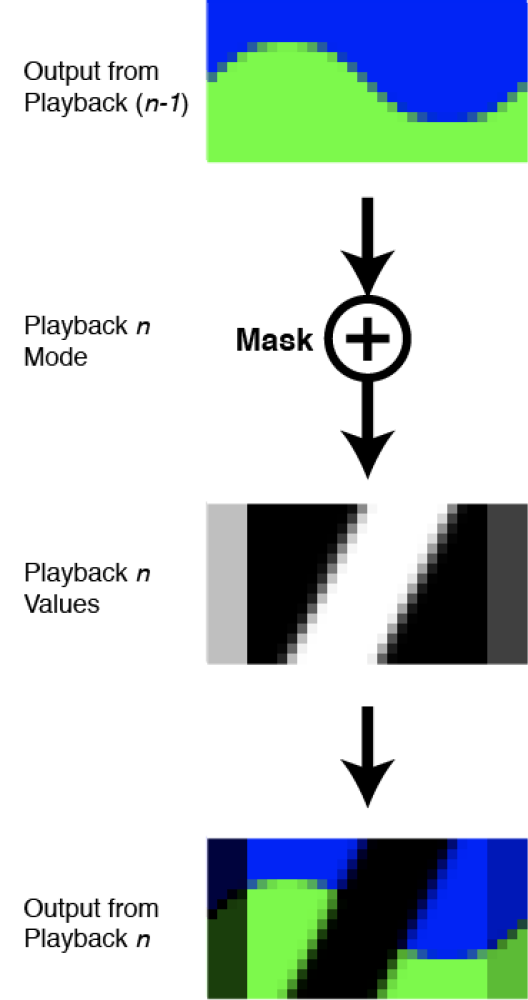Overview
The Playbacks View shows the current state and properties of the Input, Playback Faders, and Output layers and can be displayed in two formats. This view provides a plethora of mechanisms for controlling Playbacks and the Outputs of CueServer.
The control ribbon along the top of the playback view provides easy access to playback selection and controls.

Use the view toggle ( ) to switch between view styles.
The Flowchart View ( ) is arranged as a uni-directional array of sources, starting with Input, flowing through each of the Playbacks, and then finally to the Output layer. This represents the true flow of DMX content through CueServer. Each layer’s output is combined with the next.
The Faders View ( ) is arranged as a panel of vertical submaster faders. Each with playback controls and readouts for current state, next state, and Playback status.
Using the Select Menu
Use the 
Selection Options:
- All Playbacks – selects all Playbacks
- Playback (n) – select a specific Playback
- Next Playback – select the next Playback
- Previous Playback – select the previous Playback
- Empty Playbacks – select only the empty Playbacks
- Non-Empty Playbacks – select only the active Playbacks
Using the Edit Menu
Use the 
Edit Options:
- Go – play the next Cue in selected Playbacks.
- Go Cue… – play a selected Cue from the selected Playback’s active Cue List.
- Go First Cue – play the first Cue in the selected Playback’s active Cue List.
- Set Next Cue… – set a selected Cue as the next Cue for selected Playbacks.
- Clear Stack… – un-assign Cue Stack’s from the selected Playbacks (if any are assigned).
- Set Cue Stack… – assign a Cue Stack to the selected Playbacks (if any are defined).
- Release – release the selected Playback’s channels.
- Clear – clear the selected Playbacks.
- Assert – raise the priority of the selected Playback’s LTP (Latest Takes Precedence) channels.
- Lock Selected Channels – lock the currently selected channels in the active Playback.
- Unlock All Channels – unlock all channels in the selected Playbacks.
- Enabled – toggle the selected Playback’s enabled states.
- Stopped – toggle the selected Playback’s stopped states.
- Merge – set the selected Playbacks to Merge mode (default).
- Override – set the selected Playbacks to Override mode.
- Scale – set the selected Playbacks to Scale mode.
- Pin – set the selected Playbacks to Pin mode.
- Crossfade – set the selected Playbacks to Crossfade mode.
- Mask – set the selected Playbacks to Mask mode.
Playback Modes
Each Playback’s values flow into, and are combined with, the next in sequential order. The mechanics of how Playback combinations occur is dictated by each Playback’s mode property.
By default, playbacks operate in Merge mode.






